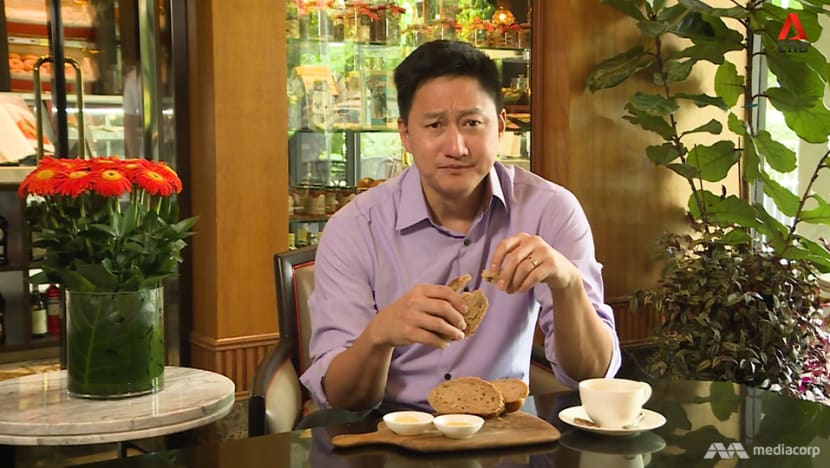Wholemeal or multigrain? The truth about ‘healthier’ breads
There is a whole range of breads, from white to fancy varieties. The nutritional facts about these options may be somewhat surprising, as Talking Point finds out.
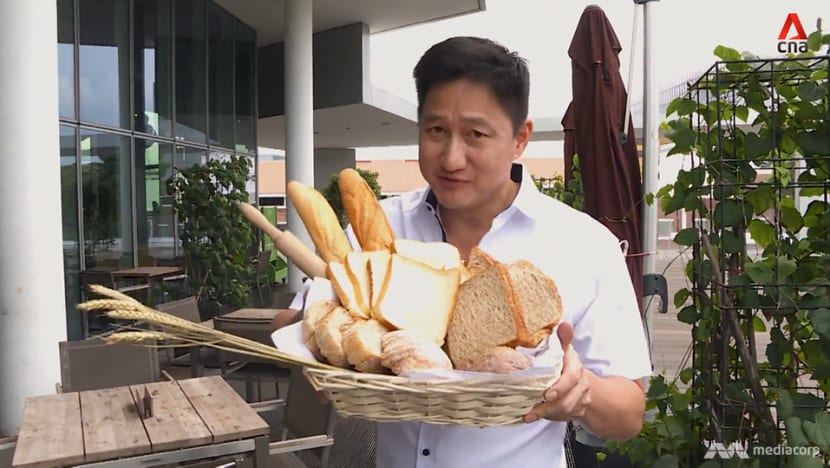
The average bread consumption in Singapore is 13.3 kilogrammes per person every year.
SINGAPORE: The market share of wholemeal bread has increased from 28 per cent to 39 per cent in the past five years, new statistics from the Health Promotion Board (HPB) show.
Increased wholegrain intake has been associated with a reduced risk of type 2 diabetes and cardiovascular disease, including stroke.
One bread lover who has made that switch is Jaclyn Kee. The higher fibre content in the wholemeal and multigrain varieties also usually keeps her children from snacking.
“In terms of weight control, I think it’s pretty good,” she says. “Also, I read somewhere that it helps boost their concentration, so I encourage them to eat it for breakfast or in between meals.”

Even at the National Day Rally in 2017, Prime Minister Lee Hsien Loong disclosed that he watches his diet by, for example, choosing wholemeal instead of white bread.
Are wholemeal and multigrain breads really so healthy, or is that marketing hype? The truth may be surprising, as the programme Talking Point finds out. (Watch the episode here.)
SIMILAR TO INSTANT NOODLES
Whether it is wholemeal, multigrain or regular white, mass-produced bread is defined as ultra-processed food — and belongs in the same category as sausages and instant noodles.
“They’ve got a lot more additives and emulsifiers, or different kinds of stabilisers, to extend the shelf life of the bread,” explains Khoo Teck Puat Hospital senior principal dietician Gladys Wong.

The term “ultra-processed food” refers to foods that have gone through substantial industrial processing and typically contain high amounts of sugar, salt and saturated fat, for example.
Some of these additional ingredients help to make the bread texture “a bit softer”, says Wong. They are also used to enhance flavour, especially in white bread.
These kinds of food additives are usually denoted by E numbers. For example, E100 to E199 mean food colouring, E200 to E299 are preservatives, E300 to E399 are antioxidants, and E400 to 499 are thickeners, emulsifiers and stabilisers.
Ultra-processed foods would be things like chocolate as well as some fruit juices and breakfast cereals, cites Wong. “Anything that can last very long … probably has got a lot more additives.”

Some mass-produced wholemeal and multigrain breads may also not be baked with 100 per cent wholemeal flour.
For example, at BreadTalk, the wholemeal and multigrain recipes may contain only 30 per cent wholemeal flour, says chef Lim Meng Poh, a senior trainer at the bakery. White flour is needed “to improve the final product — the texture”.
“It looks nicer,” he says. “(With) 100 per cent wholemeal flour, the final product would come out a little bit hard, dry and the shelf life would be shorter.”
White flour has little nutrients and a high glycaemic index, which means a higher risk of diabetes. So how healthy is wholemeal bread if there is white flour in it?
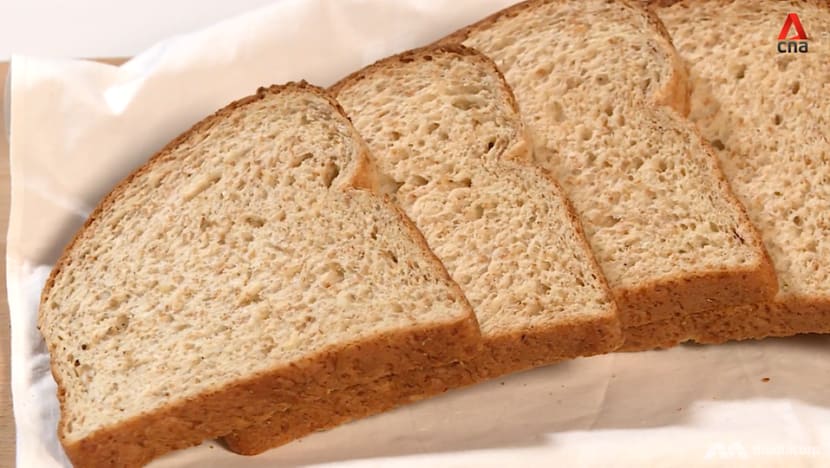
As long as wholemeal flour is on the ingredient list, says HPB nutritionist Melissa Koh, “it’s still better than 100 per cent white flour”.
What consumers can do is look out for the Healthy Choice Symbol on the packaging, she advises. Bread with that logo contains at least 25 per cent more wholegrains, which have nutrients that are good for the body.
Studies show that eating more wholegrains … protects us from developing chronic diseases in the long term.
There are multigrain breads, however, that are made of 100 per cent white flour, “with just some multigrain blends on top”, she warns.
“The ingredients are usually listed in order of the quantity used. So if you’re looking for a solid wholemeal bread, wholemeal as an ingredient should be listed as one of the first few."
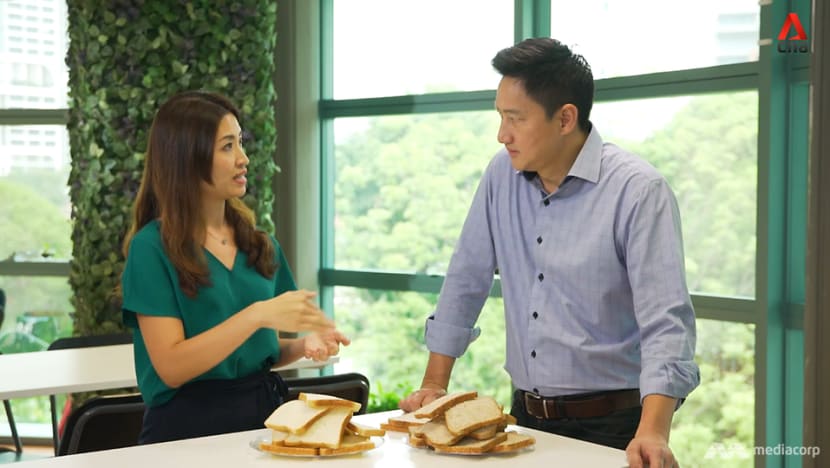
HEALTHIER OPTIONS
On the other hand, artisan breads present a healthier alternative, but cost more. So are they worth the price?
Master baker Nick Chua from Nick Vina Artisan Bakery is one who offers heathier choices such as sprouted wheat, rye, cornmeal and spelt bread. These use different types of flour and are not mixed with white flour.
“For these kinds of bread, the different types of flour bring … different textures and flavours to the breads,” he says.
The sprouted wheat bread, for example, contains wheat germ (part of the kernel), bran and a high level of fibre, while rye bread contains four times the fibre of white bread and 20 per cent fewer calories.

As for spelt flour — a wholegrain relative of wheat flour — it has around 20 per cent more protein than traditional wheat flours and is a good source of vitamin B2.
“We ferment (the yeasts) for more than 24 hours to let the wheat flavour slowly come out,” says Chua, who stresses that no emulsifiers are added to improve the texture, flavour, colour or shelf life.
These artisanal breads are priced at upwards of S$6 — about two to three times the price of a mass-produced wholemeal loaf in the supermarket.
“At first, they were very difficult to sell,” admits Chua. “(Locals) tend to eat the soft breads. So when we started, we needed to educate customers on how to eat them.”
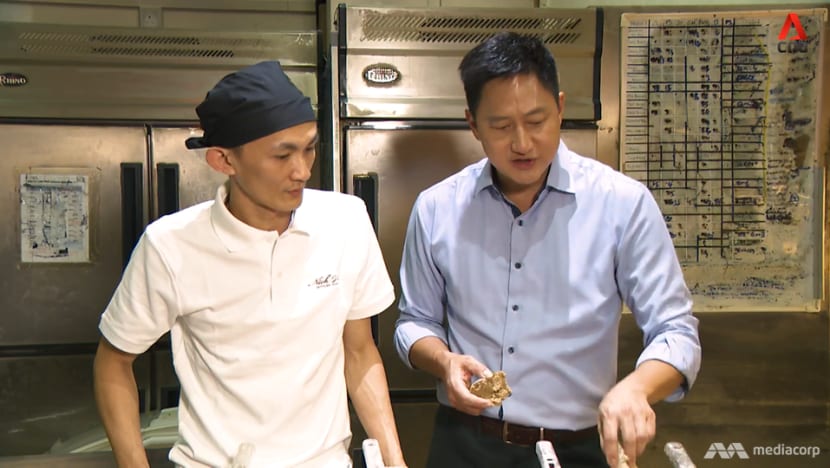
For the true weight-watchers, there are also keto buns, which do not use sugar and are gluten-free, as there is no wheat either. They are also low in carbohydrates because they are made with almond flour.
READ: Are Singapore’s first keto-compliant burgers any good?
READ: Gluten-free? Gone keto? Food allergies? Dining options for the fussy eater
At the bakery Seriously Keto, each bun has “only three grammes of carbs”, says its founder Janti Joso Brasali — in comparison with 15g in a slice of white bread.
Each bun has 8g more fat compared with a slice of white bread, but she adds that these are good, monounsaturated fats with omega-3 fatty acids.
“It could be higher in fat because of the almond flour. Also, we use eggs … and the psyllium husk (a soluble fibre),” explains the 54-year-old, who adopted a ketogenic diet two years ago and started her bakery here this year.

Such wholefoods do not come cheap: Two buns cost almost S$9.
“So not all breads are created equal. Newer varieties often come with a heftier price tag,” notes Talking Point host Steven Chia.
As to make whether they are necessarily healthier, he concludes that “looking at the labels on that loaf of bread” would help make for informed decisions.
Watch this episode here. Talking Point is telecast on Channel 5 every Thursday at 9.30pm.
